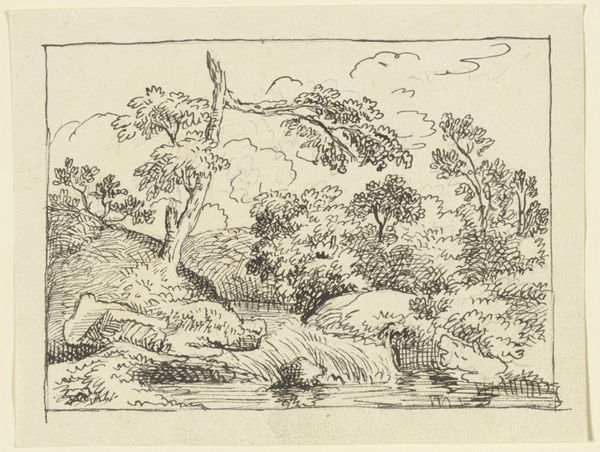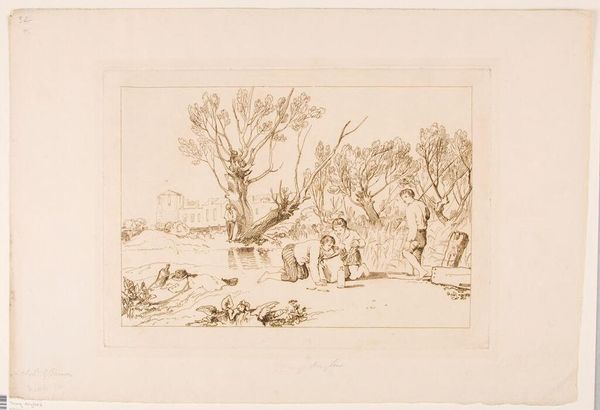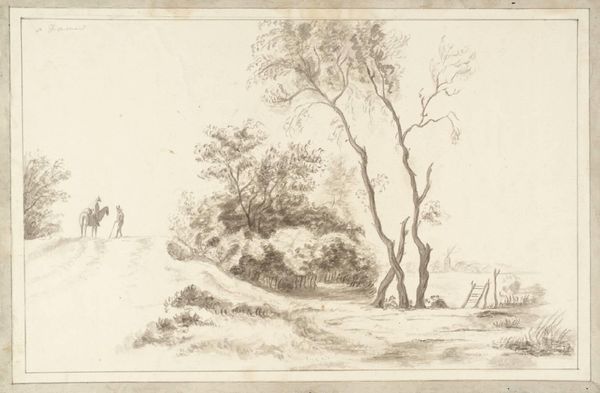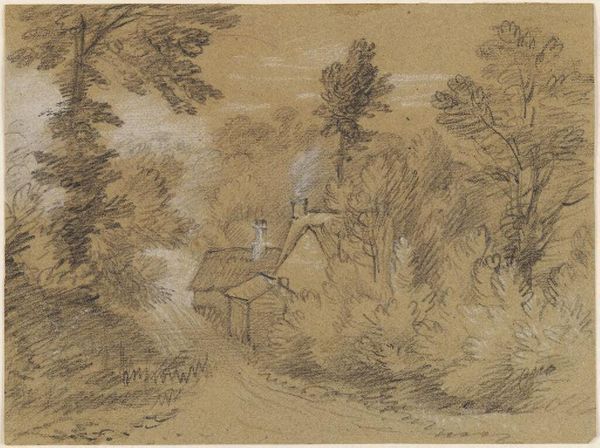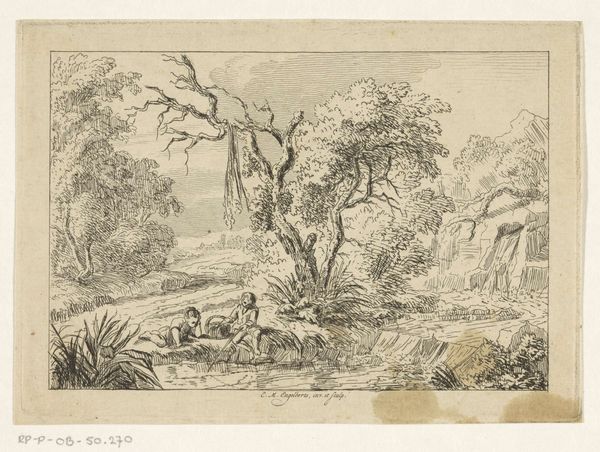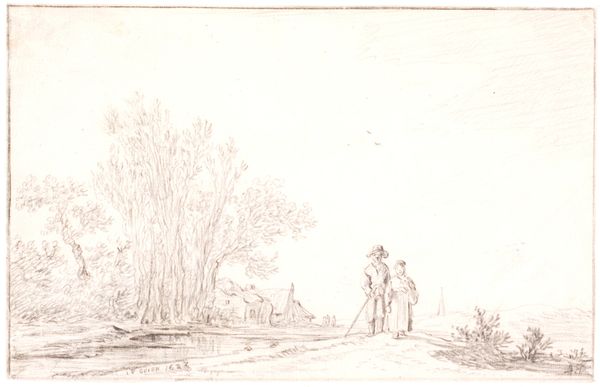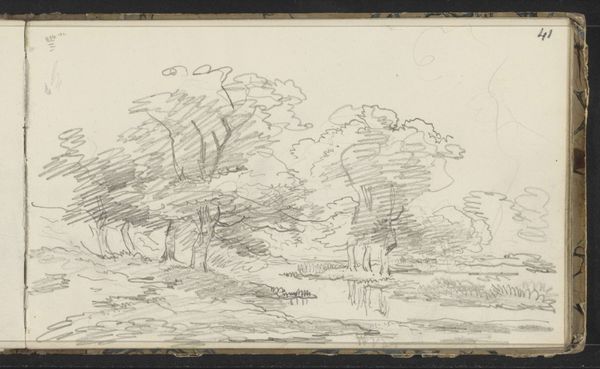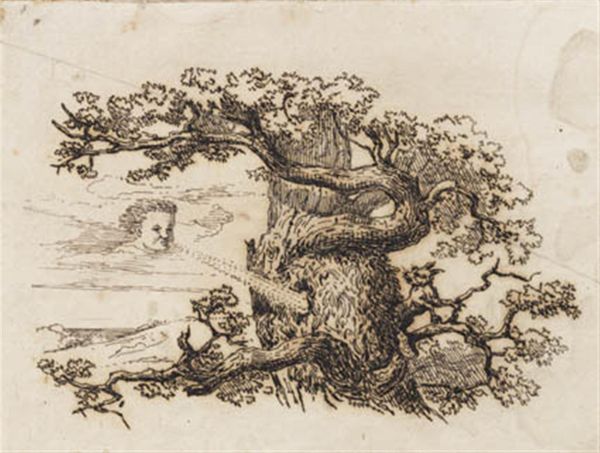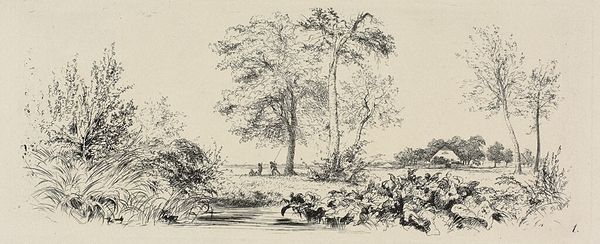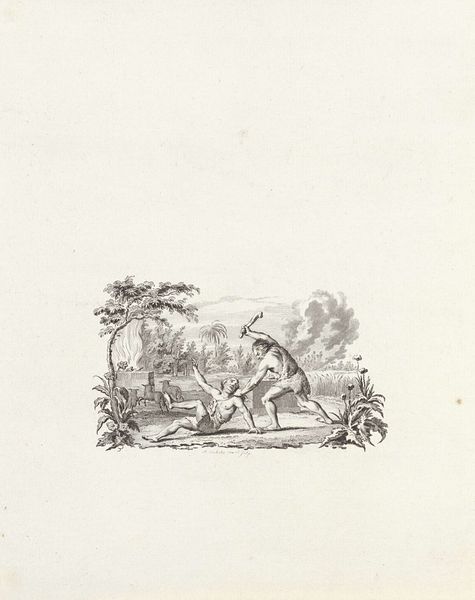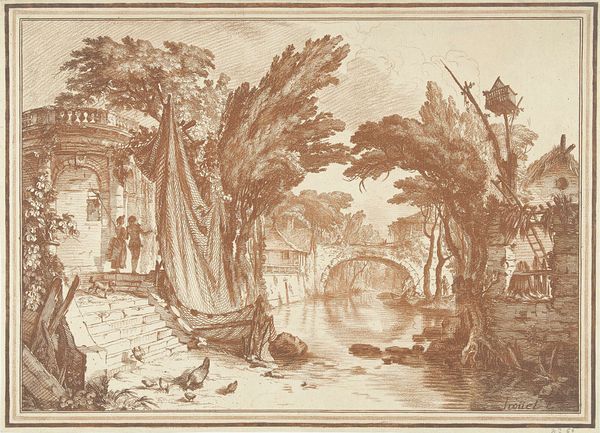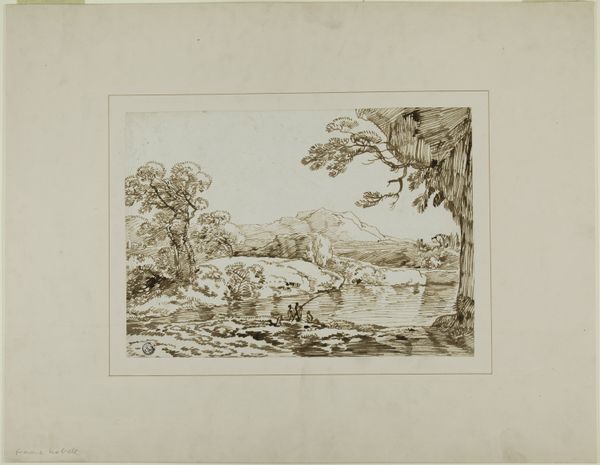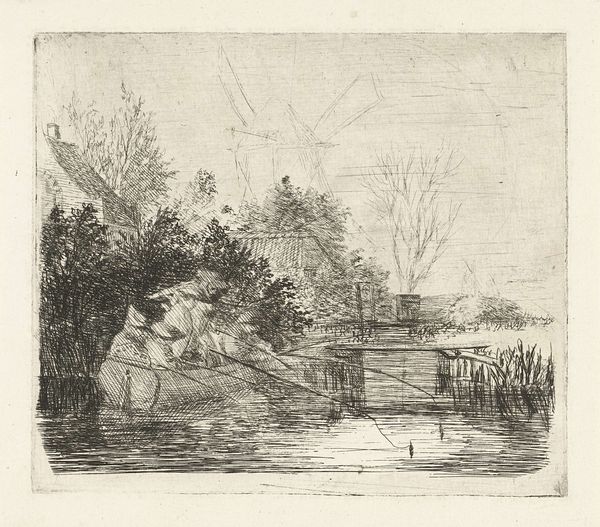
Illustration til "Halvhundrede Fabler for Børn" af Hey 1834
0:00
0:00
print, pencil, engraving
# print
#
pen sketch
#
pencil sketch
#
landscape
#
romanticism
#
pen-ink sketch
#
pencil
#
genre-painting
#
engraving
Dimensions: 145 mm (height) x 259 mm (width) (bladmaal)
Curator: I’m struck by the sense of calm it evokes; there's an almost nostalgic quiet to this idyllic scene. Editor: Indeed. What you are looking at is titled "Illustration til "Halvhundrede Fabler for Børn" af Hey," or "Illustration for Hey's Fifty Fables for Children," made by Martinus Rørbye around 1834. It’s an engraving made with pencil and ink, housed here at the SMK. Curator: It's fascinating how the artist captures such a specific moment, the gentle ripples in the water, the focused concentration of the young angler. The entire composition directs my eye to the subject. The figure almost blends with the tonality and contrasts slightly with the reed and fauna on either side of him. Editor: Rørbye was deeply invested in the socio-political landscape of his time. Consider this image in relation to Romanticism's emphasis on childhood innocence. Does the presence of such fables imply any underlying commentary on society, maybe the indoctrination of children or something? The themes of morality and societal expectations are so often entwined with children’s literature, then and now. Curator: An astute observation. I had noticed the interplay between the sketch and elements of nature—reminiscent of academic theory on line work and negative space—but you’ve steered us towards this work's deeper potential narratives and subtexts about the period, adding further depth. Editor: Also, let's observe Rørbye's choice of angling as the focal point, because fishing holds varied meanings. This simple, rustic setting provides access to how art represents the everyday lives of people in the Nordic region, a reflection of national identity through cultural practices and values tied to working or engaging the land. The way the artist presents genre painting can, in itself, signify a social statement on contemporary events, or on the individual's engagement within a naturalistic and imagined historical space. Curator: Seeing this through the lens of fable adds considerable substance. The rendering and light work well on their own, and combined with an exploration of its broader context and application, it becomes something else entirely. Thank you! Editor: Likewise! Considering art this way helps reveal so much about its impact and relevance in our constantly changing social spheres.
Comments
No comments
Be the first to comment and join the conversation on the ultimate creative platform.
